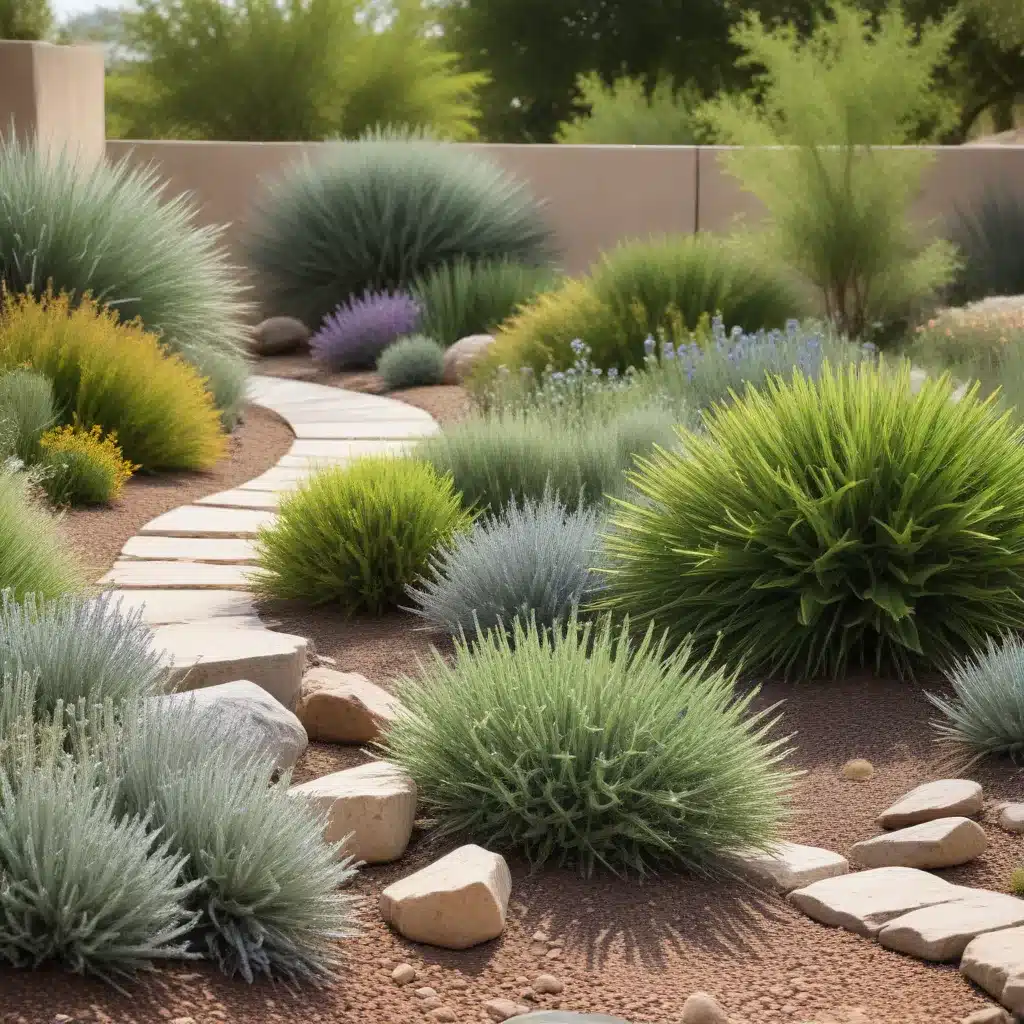
The arid landscapes of Southern California present a unique challenge for homeowners seeking to cultivate lush, thriving gardens. However, the solution lies in the harmonious embrace of xeriscape principles, where water-efficient landscaping meets the natural beauty of drought-tolerant plants. By carefully selecting species adapted to the region’s climate and implementing strategic design techniques, you can transform your outdoor space into a symphony of sustainability that captivates the senses while conserving precious resources.
Defining Xeriscape
Xeriscape, derived from the Greek word “xeros” meaning “dry,” is a comprehensive approach to landscape design that prioritizes water conservation. This holistic method encompasses a set of principles that guide the creation of landscapes that thrive with minimal water input. At the heart of xeriscape gardening lies the understanding that a well-planned, drought-tolerant design can not only reduce water usage but also enhance the overall aesthetic and ecological value of your outdoor living space.
Water-Efficient Landscaping
The cornerstone of xeriscape is the selection and placement of native and adapted plant species that are inherently suited to the local climate. By choosing flora that naturally require less water, you can significantly reduce your garden’s thirst while creating a visually stunning and resilient landscape. Additionally, the incorporation of mulch, efficient irrigation systems, and strategic zoning based on plant water needs further boosts the water-wise performance of your xeriscape.
Drought-Tolerant Plant Selection
When crafting a xeriscape symphony, the choice of plants is paramount. Seek out native species that have evolved to thrive in the region’s arid conditions, as well as adapted varieties that exhibit similar drought-resistant traits. These plants possess a range of adaptations, such as gray or silver foliage, deep root systems, and waxy cuticles, which allow them to conserve moisture and flourish with minimal water input.
Native and Adapted Plants
Some standout native plant choices for Southern California include the iconic Palo Verde tree, with its vibrant yellow blooms, the majestic Saguaro Cactus, and the spiky, red-flowering Ocotillo. Additionally, Desert Lavender and Creeping Jenny offer a lush, low-maintenance ground cover option. For adapted species, consider the Aloe Vera, Jade Plant, and the fragrant California Poppy.
Succulent and Cacti Species
Embracing the natural beauty of succulents and cacti is a hallmark of xeriscape design. These resilient plants thrive on minimal moisture, making them the perfect choice for a drought-tolerant garden. From the sculptural forms of the Agave to the vibrant hues of the Prickly Pear, these drought-adapted species add unique textures and visual interest to your xeriscape symphony.
Landscape Design Strategies
Crafting a xeriscape garden is not just about selecting the right plants; it also involves thoughtful landscape design strategies that maximize water efficiency and enhance the overall aesthetic. By paying attention to soil preparation, zoning, and microclimate considerations, you can create a harmonious and sustainable outdoor oasis.
Soil Preparation
Amending your soil with organic matter, such as compost or mulch, is a crucial step in establishing a thriving xeriscape. These additions improve soil structure, water-holding capacity, and nutrient content, creating an optimal environment for your drought-tolerant plants to thrive. Additionally, the use of mulch around plants helps to retain moisture, suppress weed growth, and moderate soil temperatures.
Zoning and Microclimate
Grouping plants with similar water needs into distinct zones, a technique known as hydro-zoning, is a hallmark of xeriscape design. By ensuring that each area of your garden receives the appropriate amount of water, you can avoid over- or under-watering, maximizing the efficiency of your irrigation system. Furthermore, considering the sun exposure and shading patterns of your landscape can help you strategically place plants that require varying levels of sunlight, creating a visually harmonious and water-wise design.
Irrigation and Water Management
Efficient water management is the backbone of a successful xeriscape garden. By incorporating advanced irrigation systems and harnessing the power of natural precipitation, you can ensure your drought-tolerant plants receive the perfect balance of hydration while minimizing waste.
Efficient Watering Systems
Drip irrigation systems are a game-changer for xeriscape gardening, as they deliver water directly to the root zone of plants, reducing evaporation and maximizing absorption. Paired with smart irrigation controllers that adjust watering schedules based on weather conditions, you can achieve a high level of precision and water savings in your landscape.
Rainwater Harvesting
Embracing the natural cycle of precipitation is another key aspect of xeriscape design. Rainwater harvesting systems, such as cisterns or greywater reuse, allow you to capture and store valuable water for supplemental irrigation, reducing your reliance on municipal supplies and further enhancing the sustainability of your xeriscape.
Maintenance and Sustainability
Maintaining a xeriscape garden may require a shift in mindset, but the long-term rewards are well worth the effort. By prioritizing ongoing care and monitoring, you can ensure your drought-tolerant landscape thrives while also reaping the environmental benefits of this water-wise approach.
Ongoing Care and Monitoring
Regular pruning, grooming, and pest/disease management are essential for keeping your xeriscape in top condition. However, the maintenance requirements are typically far less demanding than traditional, water-intensive landscapes. By staying vigilant and addressing issues promptly, you can preserve the health and aesthetic appeal of your drought-tolerant oasis.
Environmental Benefits
Beyond the obvious water savings, a well-designed xeriscape offers a range of ecological advantages. By reducing the need for water-intensive lawn areas and fossil fuel-powered landscaping equipment, you can significantly lower your carbon footprint and contribute to a more sustainable future. Additionally, the incorporation of native plants supports local biodiversity by providing essential habitats and food sources for pollinators and other wildlife.
As you embark on your journey to transform your outdoor space into a xeriscape symphony, remember that the path to a thriving, water-wise garden is one of harmonious collaboration with nature. By embracing the principles of xeriscape design, you can cultivate a landscape that not only captivates the senses but also serves as a testament to your commitment to environmental stewardship. Explore the wealth of resources available on TriCounty Tree Care to further refine your xeriscape vision and turn your dreams into a reality.


